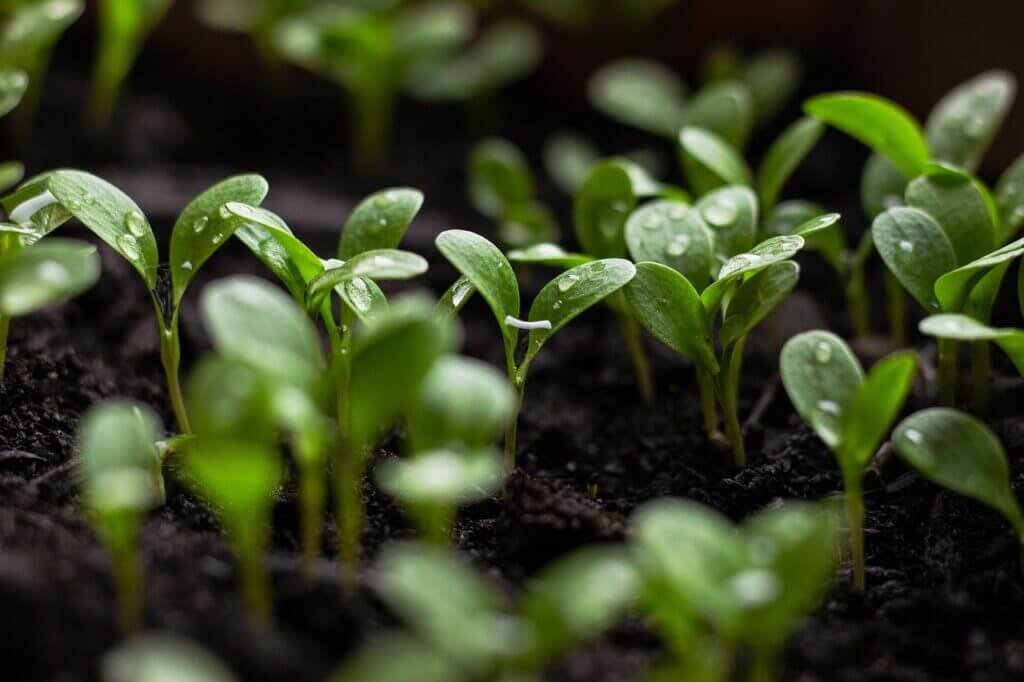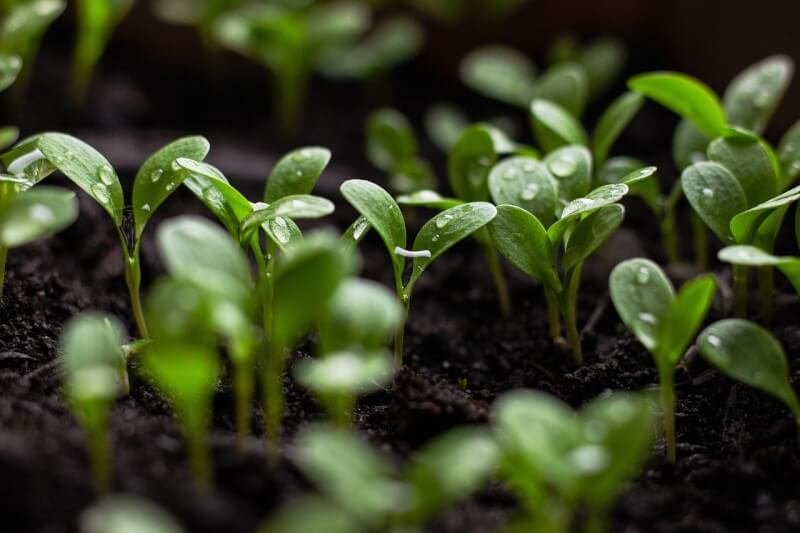Imagine transforming your urban environment into a lush paradise of thriving plants, buzzing bees, and happy neighbors. In this article, we will explore the essential principles that guide sustainable city gardening, helping you create a green oasis in the heart of your bustling city. Whether you have a tiny balcony or a sprawling rooftop, these principles will empower you to contribute to a healthier and more sustainable future. So grab your gardening tools, roll up your sleeves, and let’s get ready to embrace the beauty and power of sustainable city gardening!

Planning and Design
Site Analysis
Before starting a sustainable city gardening project, it’s crucial to conduct a thorough site analysis. Understanding the land’s characteristics, such as soil quality, drainage patterns, and sunlight exposure, will help determine the most suitable gardening methods. By analyzing the site, you can identify potential challenges and opportunities for sustainable practices.
Optimal Land Use
Optimizing land use is an essential principle of sustainable city gardening. In urban areas, space is often limited, so it’s vital to maximize the use of available land efficiently. This can include utilizing vertical gardening techniques, creating rooftop gardens, or establishing community gardens. By efficiently utilizing land, we can cultivate more green spaces and contribute to a greener and more sustainable city.
Functional Design
Creating a functional garden design is crucial for sustainable city gardening. Before planting, carefully plan the layout to ensure easy access to every area of the garden. Consider designing pathways that are wheelchair accessible and wide enough to accommodate gardening equipment or wheeled containers. A well-designed garden promotes efficient maintenance and minimizes potential damage to plants, making the gardening experience more enjoyable and sustainable.
Accessibility
Making gardens accessible to everyone is a key principle of sustainable city gardening. Incorporating accessibility features in garden designs ensures that people of all ages and abilities can engage in gardening activities. This may include raised beds or container gardens that are easily reached by individuals with limited mobility. By promoting inclusivity, sustainable city gardens become spaces for community engagement and growth.
Water Conservation
Rainwater Harvesting
Rainwater harvesting is an effective practice for conserving water in sustainable city gardens. By collecting rainwater in barrels or storage tanks, you can reduce reliance on municipal water sources and lower water bills. The harvested rainwater can be used for irrigation, reducing the strain on local water supplies. Implementing rainwater harvesting systems not only helps conserve water but also ensures a sustainable and environmentally friendly water management approach.
Drip Irrigation
Drip irrigation systems are an efficient way to provide water to plants in sustainable city gardens. Unlike traditional sprinkler systems, drip irrigation delivers water directly to the plant’s root zone, minimizing water wastage through evaporation or runoff. Additionally, drip irrigation can be combined with rain sensors to ensure water is applied only when necessary, reducing water waste further. By using drip irrigation methods, you can conserve water while promoting healthy plant growth.
Water-Efficient Plant Selection
Choosing water-efficient plants is crucial for sustainable city gardening. Native plants, for example, are adapted to the local climate and require less water than exotic species. Planting drought-tolerant species and using xeriscaping techniques, such as adding mulch and grouping plants with similar water needs together, can further reduce water consumption. By carefully selecting and grouping plants based on their water requirements, you can conserve water resources and maintain a sustainable garden.

Soil Health
Composting
Composting is an essential practice for maintaining healthy soil in sustainable city gardens. By composting organic waste, such as kitchen scraps and yard trimmings, you can create nutrient-rich compost that improves the soil structure and fertility. Compost also helps retain moisture in the soil, reducing the need for excessive watering. By incorporating composting into your gardening practices, you can nourish your plants while minimizing waste and promoting sustainability.
Mulching
Mulching is another important technique for promoting soil health in sustainable city gardens. By applying a layer of organic mulch, such as wood chips or straw, you can conserve moisture, suppress weeds, and regulate soil temperature. Mulch also breaks down over time, adding organic matter to the soil and improving its fertility. By implementing mulching practices, you can conserve water, reduce weed growth, and enhance the overall health of your garden soil.
Crop Rotation
Implementing crop rotation is a sustainable practice that helps maintain soil fertility and prevents the buildup of pests and diseases. By rotating crops in different areas of your garden each year, you can disrupt pests’ life cycles, reduce soil erosion, and enhance nutrient availability. Additionally, crop rotation helps balance nutrient demands, allowing the soil to replenish specific nutrients used by different plant families. By incorporating crop rotation, you can promote soil health and maximize the productivity of your sustainable city garden.
Biodiversity
Native Plants
Incorporating native plants into sustainable city gardens is a key principle for promoting biodiversity. Native plants are adapted to the local climate, require less water, and provide food and habitat for local wildlife. By selecting native plants, you can enhance wildlife biodiversity and support the ecological balance in urban environments. Native plants also contribute to the beauty and uniqueness of city gardens, creating a sense of place that celebrates local ecosystems.
Pollinator-Friendly Gardens
Creating pollinator-friendly gardens is an essential practice for sustainable city gardening. Pollinators, such as bees and butterflies, play a crucial role in plant reproduction and food production. By planting nectar-rich flowers and providing nesting sites, you can attract and support pollinators in urban areas. Incorporating a variety of blooming plants throughout the year ensures a continuous food source for pollinators. By creating pollinator-friendly gardens, you not only contribute to biodiversity conservation but also enhance the productivity of your sustainable city garden.
Wildlife Habitat Creation
Designing sustainable city gardens to create wildlife habitats is another approach to promoting biodiversity. Providing shelter, water sources, and food, such as berries or seeds, can attract various wildlife species to urban gardens. Installing birdhouses, bat boxes, or bee hotels can offer nesting sites for different creatures. By creating diverse habitats within your garden, you can help preserve urban biodiversity and contribute to a more sustainable and harmonious urban ecosystem.

Organic Practices
Avoiding Chemical Pesticides
Avoiding the use of chemical pesticides is a fundamental principle of sustainable city gardening. Chemical pesticides can harm beneficial insects, birds, and other wildlife, disrupting the ecological balance of urban environments. Instead, consider using natural or organic pest control methods, such as companion planting or biological controls like beneficial insects. By embracing organic practices, you can ensure a healthier and more sustainable garden environment.
Natural Fertilizers
Using natural fertilizers is essential for sustainable city gardening. Chemical fertilizers can leach into waterways, causing pollution and harming aquatic ecosystems. Instead, opt for organic fertilizers like compost or well-rotted manure, which enrich the soil with essential nutrients without negatively impacting the environment. Natural fertilizers not only support soil health but also promote long-term sustainability in urban gardening.
Crop Diversity
Promoting crop diversity is a key principle of sustainable city gardening. Planting a variety of crops, both edible and ornamental, helps prevent the spread of pests and diseases and maintains a balanced ecosystem. By diversifying your garden, you can also reduce soil depletion and enhance overall garden resilience. Crop diversity also adds visual interest and creates a more vibrant and dynamic urban garden environment.
Energy Efficiency
Solar-Powered Accessories
Incorporating solar-powered accessories in sustainable city gardens is an energy-efficient choice. Utilize solar panels to power outdoor lighting, water features, or irrigation systems. By harnessing renewable energy, you can reduce reliance on traditional electricity sources and decrease your carbon footprint. Solar-powered accessories not only save energy but also contribute to a more sustainable and environmentally conscious urban garden.
Efficient Lighting Systems
Implementing efficient lighting systems is another way to enhance energy efficiency in sustainable city gardens. Choose LED or energy-saving bulbs for outdoor lighting, as they consume less electricity and have a longer lifespan. Install motion sensors or timers to control lighting and ensure it is only used when needed. By adopting energy-efficient lighting solutions, you can reduce energy consumption and contribute to a more sustainable urban environment.
Community Involvement
Education and Outreach
Engaging in education and outreach initiatives is crucial for sustainable city gardening. By sharing knowledge and promoting sustainable gardening practices, you can inspire and empower others to create their own sustainable gardens. Conduct workshops, organize seminars, or participate in community events to raise awareness about the benefits of sustainable gardening. By fostering a sense of community, you can build a network of like-minded individuals committed to creating a greener and more sustainable urban environment.
Shared Gardening Spaces
Creating shared gardening spaces is an excellent way to promote community involvement in sustainable city gardening. Establish community gardens where individuals or groups can come together to cultivate and maintain shared plots. These spaces foster collaboration, shared responsibilities, and knowledge exchange. By creating opportunities for collective gardening, you can strengthen community bonds, promote sustainable practices, and enhance the overall well-being of the urban community.
Waste Management
Composting Organic Waste
Managing organic waste through composting is a sustainable waste management practice in city gardening. By composting kitchen scraps, garden trimmings, and other organic materials, you can reduce waste sent to landfills and create nutrient-rich compost for your garden. Composting diverts organic waste from the waste stream, reduces greenhouse gas emissions from decomposing organic matter, and nurtures healthy soils. Embracing composting as part of your sustainable city gardening routine helps minimize waste and contribute to a more circular and regenerative urban environment.
Recycling
Implementing recycling practices in city gardening is another way to manage waste sustainably. Ensure proper recycling receptacles are available in garden areas, making it easy to separate and recycle plastic containers, paper packaging, and other recyclable materials. Use recycled materials where possible, such as containers made from recycled plastic or reclaimed materials for garden structures. By incorporating recycling into your gardening practices, you contribute to waste reduction, resource conservation, and a more sustainable urban garden environment.
Urban Agriculture
Vertical Gardening
Vertical gardening is a space-efficient solution for urban agriculture in sustainable city gardens. By growing plants vertically, such as on trellises, walls, or fences, you can maximize limited space and increase crop yield. Vertical gardens also provide shade, reduce heat island effects, and create visual interest in urban landscapes. By embracing vertical gardening techniques, you can optimize land use and contribute to a flourishing urban agriculture ecosystem.
Rooftop Gardens
Rooftop gardens present an exciting opportunity for urban agriculture in sustainable city gardening. Utilize rooftops as green spaces for growing food or ornamental plants. Rooftop gardens offer numerous benefits, including stormwater runoff reduction, insulation, and heat-island effect reduction. They also provide areas for community engagement and opportunities for green roofs that help regulate building temperatures. By establishing rooftop gardens, you can transform unused spaces into productive and sustainable urban agricultural landscapes.
Community Gardens
Community gardens play a vital role in promoting urban agriculture and sustainable city gardening. These shared spaces bring people together to grow fresh produce, connect with nature, and build community resilience. Community gardens provide opportunities for knowledge-sharing, engagement in sustainable practices, and food security. By participating in or establishing community gardens, you can contribute to urban agriculture’s growth, foster community bonds, and enhance the overall sustainability of your city.
Sustainable Pest Control
Integrated Pest Management
Implementing integrated pest management (IPM) is a sustainable approach to pest control in city gardening. IPM involves monitoring pests, identifying their life cycles and behavior, and using a combination of cultural, mechanical, and biological controls to manage pest populations. By implementing IPM strategies, such as crop rotation, companion planting, or natural predators, you can effectively control pests without relying on chemical pesticides. Integrated pest management promotes environmental sustainability by minimizing pesticide use and preserving beneficial insects and wildlife.
Beneficial Insects
Encouraging beneficial insects is an essential practice for sustainable pest control in city gardening. Certain insects, such as ladybugs, lacewings, and bees, act as natural predators or pollinators and help maintain ecological balance. By providing suitable habitat, such as flowering plants, water sources, and shelter, you can attract and support beneficial insects in your garden. Beneficial insects not only control pest populations but also contribute to the overall health and sustainability of city gardens.
In conclusion, sustainable city gardening encompasses several key principles that contribute to a greener, more environmentally friendly urban environment. By incorporating practices such as water conservation, soil health promotion, biodiversity enhancement, organic pest control, energy efficiency, waste management, urban agriculture, and community involvement, individuals can create sustainable gardens that benefit both the local ecosystem and the community as a whole. With careful planning and design, a focus on sustainable practices, and a commitment to education and outreach, sustainable city gardening can play a crucial role in creating a healthier and more sustainable urban future.


